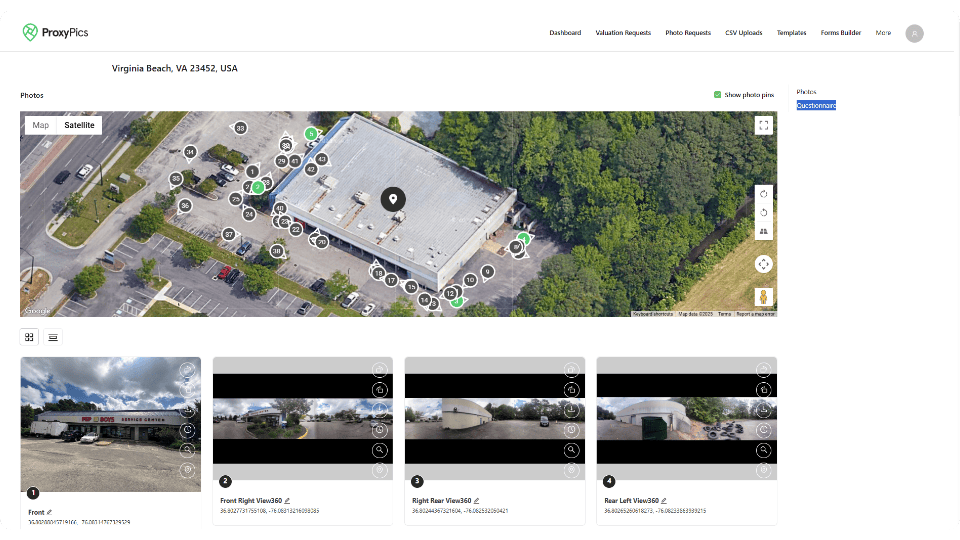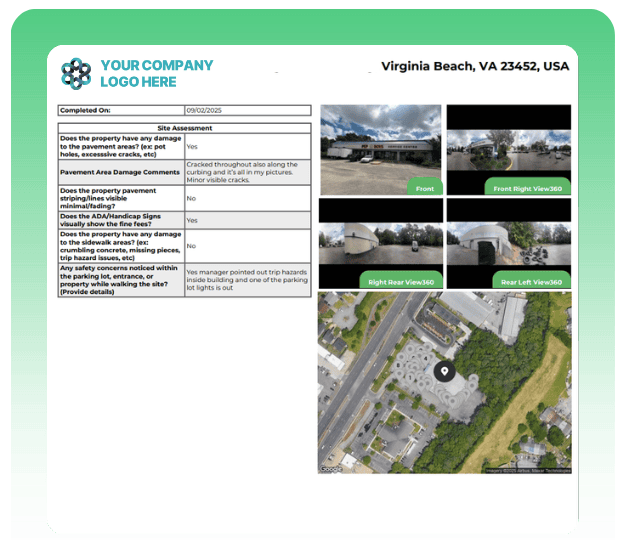Summer heat, storm runoff, and daily traffic leave behind hairline cracks, worn striping, and faded ADA stalls. These might not seem urgent while the sun is out, but the first blanket of wet leaves or snow can conceal those issues, making them tougher to track, document, and fix. That’s why operators are prioritizing parking lots and walkways right now, while conditions are still clear.
What FMs Are Flagging in the Field
Here’s what’s consistently coming up in conversations with FMs this season:
Surface Integrity: Cracking, potholes, and standing water that signal sub-base concerns.

Striping & ADA Compliance: Visibility of lines, especially handicap stalls, directional arrows, and fire lanes.

Drainage: Catch basins and grates clogged with summer debris that could cause pooling when fall storms hit.

Expansion Cracks: Seasonal movement points that widen if not sealed before cold weather.

The Cost of Waiting Until Spring
Freeze-thaw cycles force water into cracks and joints, breaking down the sub-base and multiplying surface failures. What could have been a sealcoat or crack-fill in September often turns into a full mill-and-overlay by April. On top of that, compliance issues like faded ADA striping or unmarked fire lanes don’t get a pass just because snow is on the ground. Delaying repairs until after winter usually means higher costs, bigger scopes, and more disruption for tenants and customers.
How Our Clients Are Staying Ahead
The most effective FM teams are taking advantage of the small window between summer and fall to document, prioritize, and budget repairs. Some are layering pavement audits into their broader seasonal inspections, while others are using geo-verified photos and condition reports to keep vendors accountable and avoid blind spots across their portfolios.
The point isn’t to over-engineer a new process, it’s about making sure what’s already in motion doesn’t get buried under leaves, ice, or snow before it’s too late.

Our reports don’t stop at surface photos. They can include View360, video walk-throughs, 3D renderings, or even takeoffs that quantify square footage for crack fill, sealcoating, or re-striping.

This level of comprehensive documentation helps FMs prioritize repairs, hold vendors accountable, and budget with confidence. Instead of reacting to what winter reveals, teams walk in with geo-verified proof of current conditions and the data to act now.
This is also the point when many FMs submit bid requests to asphalt and paving contractors. Having clean documentation, from line-item condition reports to takeoffs that quantify square footage for striping or sealcoating, helps scope those bids and prioritize vendor responses. Compliance-related issues like ADA stalls or fire lanes are often fast-tracked, while less urgent wear is scheduled into spring.

See how much ground you can cover before the first leaf hits. Get your first batch of 10 sites on us. Click here.